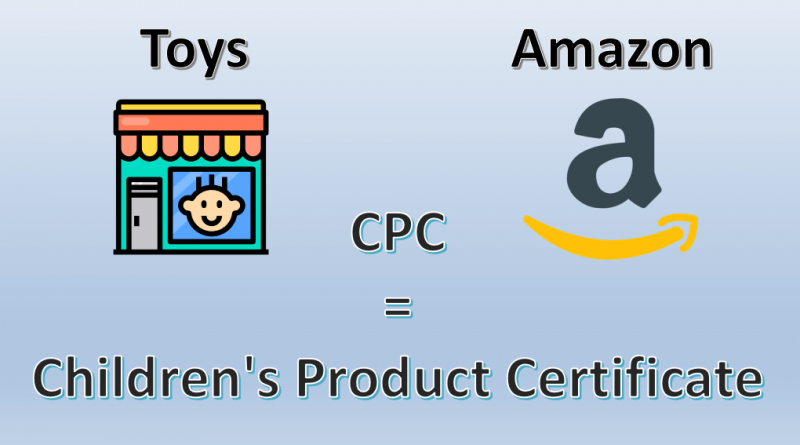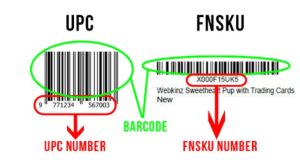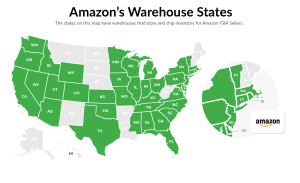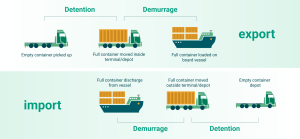
Consumer Product Safety Improvement Act of 2008 (CPSIA) defines a “children’s product” as a consumer product designed or intended primarily for children 12 years of age or younger.
Here are the rules your toy must adhere to send it to US :
First of all, determine the rules and regulations that will apply to your toys.
- Laboratory testing for safety and materials compliance.
- The tracking labeling requirements.
- Product registration labeling if the toy is designed for toddlers
- Issuing of the Children’s Product Certificate (CPC).
- For a brand-new product, ask for a replica to be supplied before full production beginning, and have this tested to ensure that you will not find yourself in possession of a full shipment of toys that won’t be legal to sell.
Step one: Laboratory testing
- Find a CPSC approved laboratory to test your toys to ensure that they comply with the regulations on phthalates, lead and heavy metals, flammability, and suitability for the over-3 age group.
- Contact the laboratory directly and confirm that they can test your toys for compliance with the regulations above.
- Find out how many samples the laboratory will need, and how to send them for testing. It is a good idea to ask how long testing will take as well.
- From the larger order of toys you will be importing, choose a random selection of samples for testing, and package them with all the information that the laboratory you are dealing with asks from you such as your contact details as the applicant for testing, the name of the product, and if possible, additional information such as what the toy is made from.
- Send these samples off to the laboratory you have chosen from the CPSC list. When they have been tested and passed, the laboratory will return a full test report to you indicating that the toys have passed.
A manufacturer or importer of a children’s product must use a third party, CPSC-accepted laboratory to test its product – https://www.cpsc.gov/Business–Manufacturing/Testing-Certification Other approved testing labs are located in Hong Kong, Canada, Vietnam, Greece, Mexico, Indonesia and the U.S. There are many CPSC laboratories in China.
Product testing certificate example
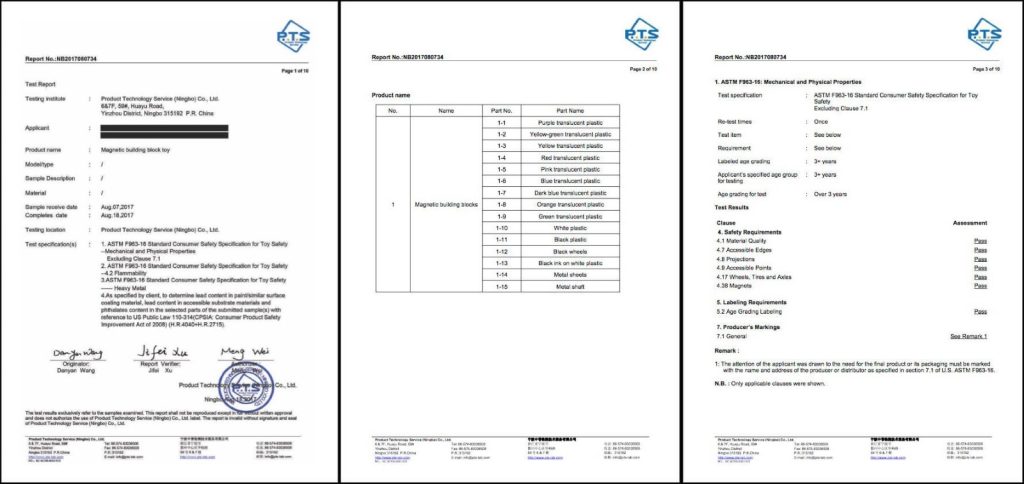
Step two: The tracking label
Draw up a tracking label for the toys, which shows:
- The place and date that the toy was made.
- The toy’s batch number or production run, or anything else that will help the manufacturer trace the individual toy back to a specific factory or production run in the case of faults or recalls.
- Your details as the product’s importer, including your business address and contact details, and an outline of what the product is made of in this case, ABS plastic, and metal.
- Then, attach the tracking label to the packaging of each toy and if possible, each toy itself.
- If you intend to sell stuffed toys in Ohio, Massachusetts or Pennsylvania, or if you sell online and ship to these states, there are also local licensing and labeling regulations to follow too. You can click the individual state links to find out more or check with the relevant Chamber of Commerce.
Tracking Label Example.

Step three: The Children’s Product Certificate
Finally, you must issue your toys with a Children’s Product Certificate for import, which shows the following:
- The details (description) of the toy itself.
- The regulations that apply to the product, such as the product testing that your toys will have gone through.
- Your details as the importer who is certifying the product.
- The contact details of the person or office that holds the results of your product tests-usually yourself.
- The place and date the toy was made.
- The place and date of product testing.
- The details of the laboratory that tested and passed the toys as safe and legal.
- Make sure that the Children’s Product Certificate accompanies your toys for import-and that your freight forwarder also has a copy of the laboratory testing results to hand in case of queries upon arrival in the USA.
Here is an example of a compliant Children’s Product Certificate for the magnetic building blocks:

You can provide an actual hard copy of the certificate to your distributors and retailers, or you can provide a dedicated website with that specific certificate on your invoice. (See the answer addressing electronic certificates below.) The law requires each import (and domestic manufacturer) shipment to be “accompanied” by the required certificate.
Additional labeling rules for infant and toddler products
As well as the tracking label, toys and products designed for infants and toddlers (children aged 5 and under) have to be sold with a product registration card.
The product registration card must be fixed to the product itself, and display:
- The manufacturer’s name and contact details.
- The date the item was made.
- The model name and batch number for the product, and any other relevant identifiers.
- It must include a prepaid shipping label to be used by the buyer for optional product registration and in case of recalls.
- Buyers must have the option to enter their contact details on the card and register their purchase, and the card should also give buyers the option to register their details online instead of mailing back the card.
- Records of registered buyers should be retained by the importer in case of future product recalls.
- The card should also have space for the consumer to provide their name and contact information. The importer or manufacturer is also required to provide an option to register online. A record of those who have registered should be kept to notify consumers of safety issues or recalls.
- A complete explanation of the requirements for product registration cards can be found here: https://www.cpsc.gov/Business–Manufacturing/Business-Education/Durable-Infant-or-Toddler-Products/Durable-Infant-or-Toddler-Product-Consumer-Registration-Cards
Registration Card Example.
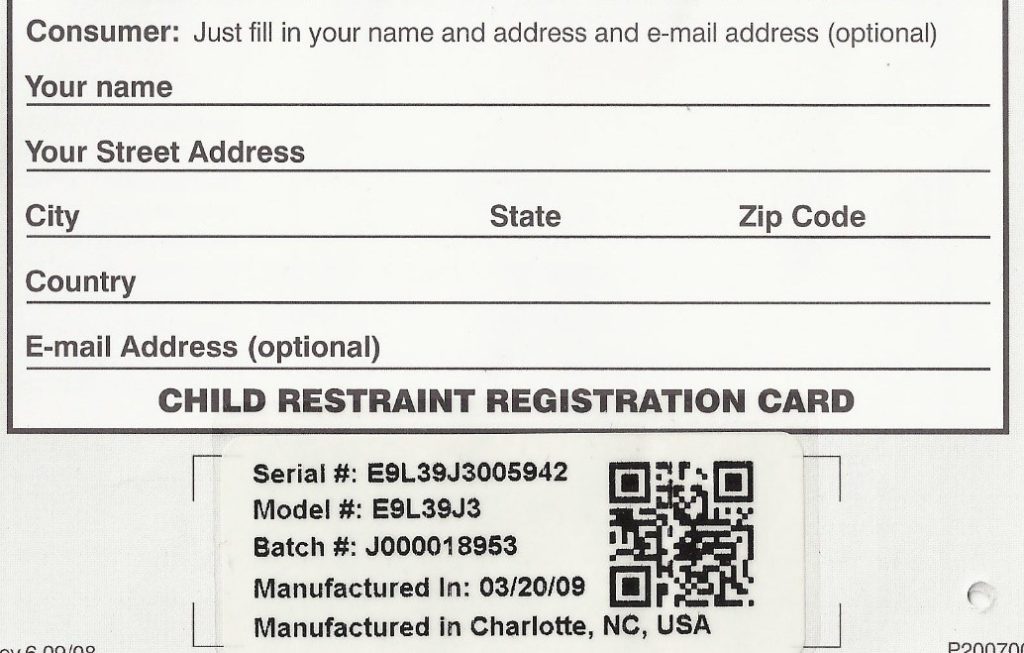
If your toys or children’s products are meant for infants (children aged under 3) then they have to comply with the Small Parts Regulations standards before they can be issued with a Children’s Product Certificate. This applies to things like pacifiers, rattles, cribs, and anything else designed for use by infants and babies.
The choking hazard label requirements are as follows:
- If the product or toy is meant for children aged 3-6 years old and contains small parts, it must be labeled as a choking hazard due to small parts, and not suitable for children under 3.
- If the product consists of a ball smaller than 1.75 inches in diameter and is meant for children of 3 or older, it must be labeled as a choking hazard due to a small ball, and not suitable for children under 3.
- If the product contains a small ball and is meant for children between the ages of 3-8, it must be labeled as a choking hazard containing a small ball, and not suitable for children under 3.
- If the product is a balloon or contains a balloon and is meant for children of 12 or under, it must be labeled as a choking hazard, and include the text: “Children under 8 yrs can choke or suffocate on uninflated or broken balloons. Adult supervision required. Keep uninflated balloons from children. Discard broken balloons at once.”
- If the product is a marble and is meant for children of 3 or older, it must be labeled as a choking hazard and state “This toy is a marble. Not for children under 3 yrs.”
- If the product contains marble and is meant for children aged 3-8, it must be labeled as a choking hazard and state “Toy contains a marble. Not for children under 3 yrs.”

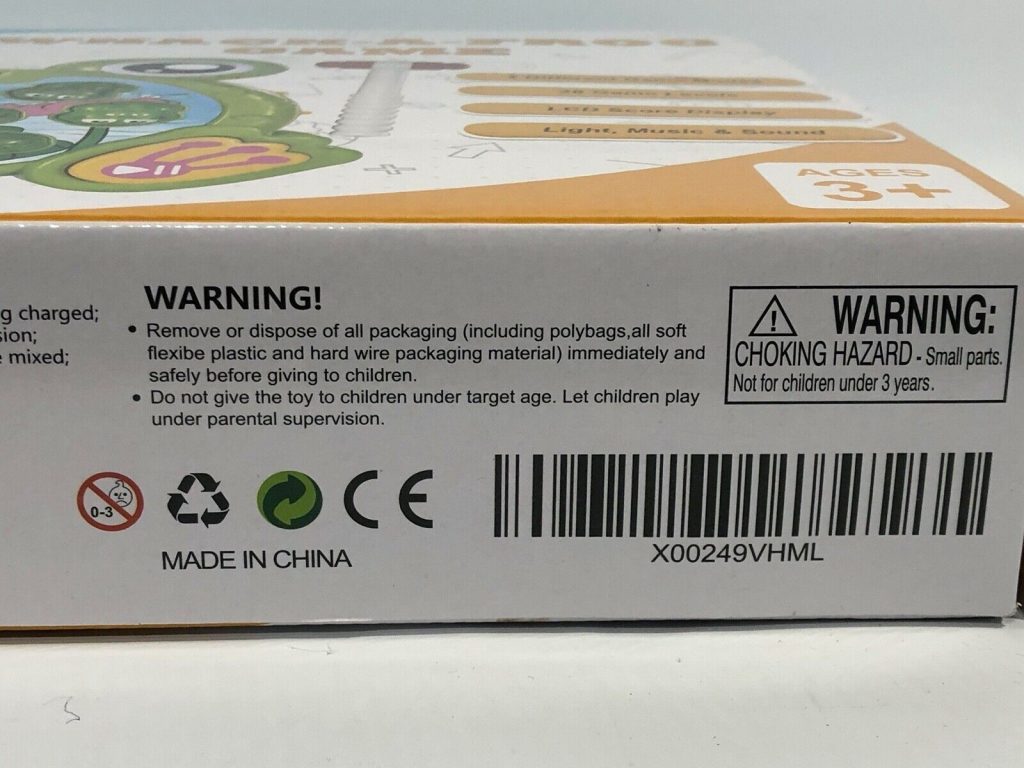


Toys for infants
Products meant for use by infants (under 3 years of age) and toddlers (under 5 years of age) are required to meet even stricter standards. Examples of these products are:
- cribs
- play yards
- infant carriers
- strollers
- walkers
These products fall into several different subcategories, each with specific requirements. The categories and their testing requirements can be found here: https://www.cpsc.gov/business–manufacturing/business-education/durable-infant-or-toddler-products.
FDA also manages and inspects imported electronic toys and products. The FDA ensures that electronic imports are safe and effective.

UL 696 – Standard for Electric Toys
UL 696 is titled the “Standard for Electric Toys”. It covers electric products meant to be used as toys by children over the age of 3.
Can I Import Licensed Toys from China?
One major theme on the toys market is goods with licensed characters. Barbie, Superman, Batman, Minions and other licensed characters are extremely popular toys on the market. U.S. Customs and Border Protection (CBP) can be very strict when it comes to importing items featuring trademarked or licensed characters. The CBP takes intellectual property very seriously.
If you are importing licensed toys, it is important to double check your contracts. You should be very clear on what toys have trademarked characters or licensed logos. It is also important to make sure you have some proof of trademark compliance in writing from the seller with your import documents. If your toy supplier purchased the items from a third-party vendor without obtaining the proper paperwork, the trademark or license might be violated.
Some licensed toys available online are counterfeit and fake. Importers purchasing toys from China and other international sources need to know that it is their responsibility to make sure their toys comply with federal, state and other import regulations. Look out for signs that your licensed items are fake or counterfeit, including trademarks, quality indicators and certificates of authenticity. This is important because you could face fines and legal action as the importer and seller of fake or counterfeit items.
Make sure to have detailed records of all licensing or trademark paperwork, as this can help you prove the legitimacy and authenticity of your imports. The CBP seizes and halts many of imports every year, some of which are for licensing violation.
Can I Import Wooden Toys?
In addition to the safety standards set for toys, wooden toys like building blocks and wooden playground equipment are regulated by the same standards for importing wood. This means that you will need to follow a few special rules when importing wooden toys. These rules and regulations help deter illegal logging and help protect the U.S. from pests.
The USDA (United States Department of Agriculture) presides over the import of timber and wood products, including wooden toys and playground equipment. The USDA’s Animal and Plant Health Inspection Service (APHIS) requires that all wood entering the U.S. is inspected. Imported wood and wood products must also undergo sanitization procedures. These wood sanitizing procedures can help prevent non-native pests and insects from entering the U.S.
APHIS requires heat or chemical treatment to sanitize wood. Heat treatment involves treating the wood in a kiln or special microwave energy dryer. Chemical treatment involves fumigating wood with a surface pesticide.
Additionally, those importing wooden toys and products must get a Timber and Timber Products Import Permit to accompany their shipments. You can easily get this permit by filling out PPQ Form 585. You can even fill out the form and apply online. Be aware that it will take approximately one month to get the permit, so it is wise to file in advance. The import permit indicates the type of treatment the wood requires: heat treatment or chemical treatment. You will also need a phytosanitary permit to import wooden toys and wood products.
Amazon Requirements
Amazon is strict when it comes to selling children’s products on its marketplace. They require that you can provide a complete set of test reports and children’s product certificate for each SKU you intend to sell.
Further, Amazon will check that the test report information (e.g. product SKU, importer, address, date, PO number) is matching what you have stated on the children’s product certificate.
If not, they can reject your listing or even suspend you.
As such, I don’t recommend that you try to skip lab testing by using outdated test reports provided by your supplier. The test report should be valid for the specific products you are importing and issued in your company name – not your suppliers.
What is the best way to stay current on the requirements for durable infant products?
Small Business Ombudsman mailing list: Distributes plain English explanations of certain Commission actions and provides occasional updates on Commission rulemaking and other activities.
Twitter: Follow the Small Business Ombudsman @CPSCSmallBiz for more frequent updates on CPSC requirements.
Follow CPSC on Regulations.gov through a direct search or via an RSS feed for real time updates. Regulations.gov also has a list of all rules open for comment.
Contact the SBO directly: If you’re still not sure and would like further assistance with your product, you may contact the Small Business Ombudsman directly through this contact form or by phone at (888) 531-9070.
List of products and safety requirements for chldr prod under 12 yo follow the link https://www.cpsc.gov/Business–Manufacturing/Testing-Certification/Lab-Accreditation/Rules-Requiring-Third-Party-Testing
Rules Requiring a General Certificate of Conformity (GCC) – General Use/Non-Children’s Products (including chlrd under 12 yo) https://usacustomsclearance.com/process/how-to-import-toys-from-china/

